Fanservice in Anime: Perception Versus Intent
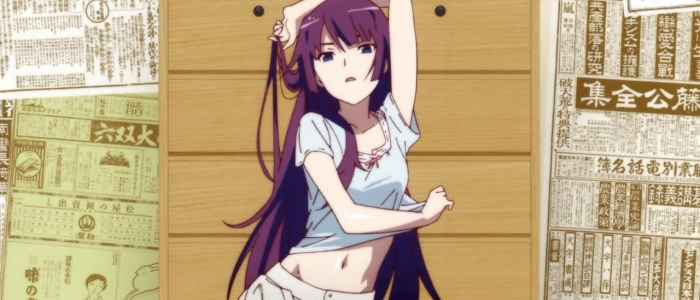
Fanservice, or the addition of elements unnecessary to a story simply to appease fans, has always been a hotly debated topic in the anime community. More often than not, this phenomenon manifests itself in the form of the sexualization of characters (usually female) by using the metaphorical camera and framing of a shot to draw attention to and focus on such tasteless attractions as cleavage, underwear, skin, and more. Many anime use this tactic as a re-occurring trick to draw in their audience, using fanservice either as a supplement or a substitute for the plot of the show. In fact, this is exactly what fanservice is: a shortcut to engaging the audience and to keep them coming back for more.
Fanservice in the Modern Anime Industry
Unfortunately, in the modern anime industry, 4 out of 5 times a boob is just going to be there for the purpose of appeasing the fanbase. Anime is a very economically-minded medium, meaning that the primary goal of producing anime is to make a profit, and, like any such medium, its first and foremost priority is supplying its consumers with whatever it may be that they desire. And what much of the anime fanbase desires, to be honest, is boobs. Plenty of popular anime have proved time and again that the inclusion of fan pandering is a financially wise decision, with entire franchises such as Sword Art Online, Fairy Tail and Code Geass including more and more fan service over the course of their runs to keep fans engaged.
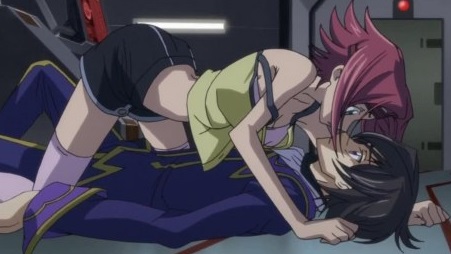
It’s hard to deny the results: these shows are all wildly successful and have managed to amass dedicated fanbases consisting of hundreds of thousands. It’s also hard to deny that this is a problem for the future of the medium: not only does it cast a shadow over anime’s reputation as a form of entertainment, but it suffocates the artist’s creative abilities by limiting what kind of stories they can create and what their tone and execution will be like. On top of this, because such an overwhelming majority of the anime consumer base is male, anime have an unfortunate tendency to objectify their female characters and turn them into sexy attractions. In a medium already already often lacking in strong or complex female characters, this blatant misogyny is just dragging it down even further.
Because of this, modern viewers of anime often come to view any and all sexual shot-framing or skimpy outfits as fanservice, and will often become annoyed or bothered when these characteristics appear within a show. Many popular shows are heavily criticized by the anime community simply because they focus too much on fanservice. Examples include anime such as No Game No Life and Akame Ga Kill, shows about fantasy worlds with magic powers and high-stakes battles that are loaded with fanservice to an unnecessary degree. Critics have often mentioned with distaste that in No Game No Life a twelve-year-old girl is introduced with a panty shot, and Akame Ga Kill is criticized for mixing something as lighthearted as fanservice with excessive amounts of violence and gore to the point where it feels offensively out of place, making a mockery of the supposedly dark and serious tone of the show by interrupting it with scantily-clad women. The consensus between many of the more critical anime voices around the internet is that neither of these shows had any need for fanservice: both of them had compelling fantasy-epic plot lines going for them, and the addition of fanservice messed with the tone, pacing and quality of those plots. What could have been a fun and endearing show about over-the-top magic games and puzzles became creepy and unapproachable by anyone who wasn’t interested in spending half of their time watching young girls get put in unrealistic compromising positions, and what could have been an interesting exploration of the struggle against corruption in government was turned into a tasteless killing spree.
In both of these instances, fanservice was included just because. There was no reason for it to be there, and it stuck out like a sore thumb. These reactions are only fueled by the fact that anime has developed a severe stigma in the West for being exactly that: mindless cartoons that substitute story for scantily-clad characters and their grotesque objectification. Due to this, many viewers hate to see any form of anything that resembles fan service in their anime, as they view it both as insulting to them (as it implies that they, as the viewer, are unable to engage with an intelligent story and need to be pandered to) and damaging to anime as a medium, as it only strengthens the argument that anime is all mindless, raunchy soft-core porn.

But are these sexual overtones always the result of shameless fan-pandering, or do the creators sometimes actually have something more in mind? Though there may be many shows for which this is not the case, that doesn’t mean that viewers should always assume that every anime is going to handle these elements in the same way or for the same reasons. What may at first glance appear to just be pandering may in fact have a more subtle reason behind it. In order to understand this better, let’s look at the purpose of elements that resemble fanservice in several widely popular yet vastly different franchises: Neon Genesis Evangelion, Kill La Kill, and the Monogatari Series. (Warning: while mostly free of spoilers, there is discussion of the details of some of the scenes in the first two seasons of Monogatari)
Neon Genesis Evangelion: Fanservice to Manipulate Tone
Let’s start with Evangelion. Neon Genesis Evangelion, often referred to simply as Evangelion, NGE or Eva is one of the most widely popular and controversial anime of all time. It first aired twenty years ago in 1995, created by then-industry-giant and still-existing studio Gainax and directed by the famous (or infamous, depending on your point of view) Hideki Anno. Evangelion started out as a fairly typical monster-of-the-week style mecha show, using many of the customary tropes of the genre for the time, and then slowly evolved into something more as it became much more concerned with the details of the mental states of its characters and with the state of anime as a medium.
So what does Evangelion have to do with fanservice? Well, Evangelion uses many shots and scenes, especially in its earlier episodes, that would at first glance be referred to as just that: fanservice. Moments like the dopey protagonist Shinji accidentally falling onto a naked Rei Ayanami and grabbing her boob or the feisty Asuka Langley lounging around in a low-hanging tank-top don’t really help to say anything about the psychology of these characters, and will instead appear to many viewers to be just a little bit of appeasement sprinkled in with the mechas.
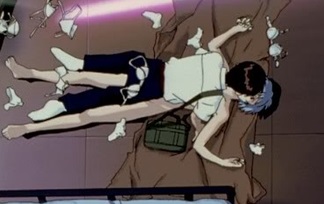
However, this is not just pointless fluff to supplement the actual story. To get a better idea of what these scenes could be doing, we have to take a look at Evangelion as a whole and keep in mind what its major themes are. Evangelion is mainly concerned with depression and emotional isolation, but it’s also concerned with escapism (the practice of using a fictional reality to fulfill the needs one has in the real world) and the ways in which anime can be used as an unhealthy substitute for living one’s own life. The series makes this point by starting out using expected tropes in expected ways, such as the male teenage protagonist who, by circumstance, is the only one can save the world, or the emotionless doll character, Rei, or the aggressive girl who’s outward hostility is actually a reflection of her internal insecurities, Asuka (usually referred to in anime as a ‘tsundere’ archetype).
By introducing the expected characters and using them in the expected ways (at least for the time it was made), the creators of Evangelion lure the audience into a sense of security. This is anime: it has all the tropes and goofy moments the audience has come to expect, and it has the fanservice that comes with that. However, Hideko Anno was not interested in the pandering nature of anime. In fact, it was quite the opposite: Anno has stated on many occasions that he detests what the anime industry does and what the fanbase has become.
Evangelion is his answer to that. It takes all of the expected parts of anime and it slowly unveils them for what they really are, pulling back the curtain on the actual implications of characters like Asuka and Rei and the extremely disturbing behavior of turning them into sex icons. Evangelion uses fanservice intentionally to help create a world that looks, feels and smells, at first, exactly like the anime people are used to, so that it can undermine their expectations and increase the effectiveness of its points. The creators of Evangelion realized that fanservice had come to be more than just a tool of the anime industry; it had developed certain stigmas around it in the eyes of the viewer outside of what it literally was, and that by recognizing what those stigmas were fanservice could be implemented as a tool to manipulate the viewer’s impressions of the show.
Kill La Kill: Fanservice as Humor and Social Commentary
Creative intent behind fanservice isn’t limited to convoluted psychological horror thrillers and biting commentary aimed towards sections of the consumer base, though. On the other end of the spectrum we have a much more recent production, the first anime produced by the newly-formed Studio Trigger and perhaps the most widely-recognized anime of 2014, Kill La Kill. While Evangelion takes itself almost completely seriously, Kill La Kill is focused first and foremost on one thing: fun. At its heart, Kill La Kill is an over-the-top action-packed parody of many timeless elements of anime, including a high-school setting, random power-ups, lucrative boss fights, entirely unrealistic character designs and more yelling of nonsensical attack names and mid-fight spouting of ideals than one would think possible. Kill La Kill makes sure never to have a dull moment, advancing at a breakneck pace through its many phases. It moves quickly from quirky vignettes to a tournament showdown to a global-scare battle between secret organizations, and that’s not even the halfway point. And, amidst all of the shouting and plot twists, Kill La Kill dishes out plenty of people in absurdly skimpy and revealing outfits and butt shots framed at angles that would simply not be possible with a live-action camera.
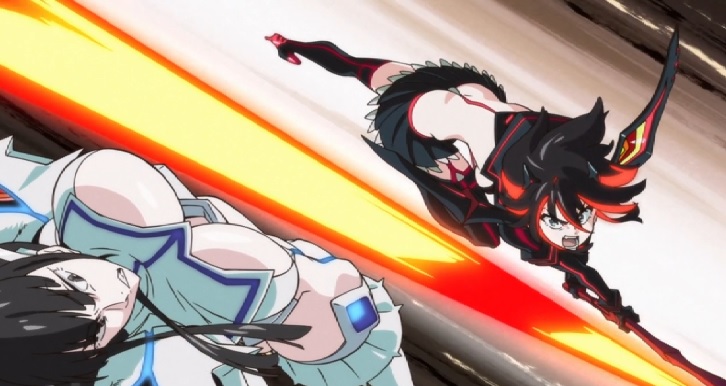
So how is this not just fanservice? Well, in a couple ways. First of all, if you’ll remember, the definition of fanservice is an element of a show that is unnecessary to the goal of the show and is only there to appease fans. However, Kill La Kill is both a comedy and a parody: it makes fun of elements of other anime and uses them to enhance the show’s own humor. This can be seen in just how over-the-top Kill La Kill‘s fanservice is, with many would-be pandering shots being so ridiculous that they could hardly be counted as sexy. More than that though, the show draws attention to its own absurd outfits, with the protagonist Ryuko Matoi constantly complaining about how embarrassing and lewd they are and how they stupid it is that people would be able to get more powerful by wearing something so raunchy.
Ryuko is very aware of what she’s wearing, and she’s rightfully embarrassed by it. In fact, her frustration over her outfit and her reluctance to put it on are actually a barrier she’s forced to overcome in the plot. In Kill La Kill, bouncing boobs and exposed midriffs aren’t there to pander, they’re there because it’s funny how much these things appear in anime and Kill La Kill likes things that are funny. Just like everything else in Kill La Kill, the fanservice is over-the-top because Kill La Kill is trying to be as over-the-top as possible.
Kill La Kill goes beyond just being excessive with its showing of skin, though. It wants to make sure that it is clear that there is a line between using fanservice for the purpose of parody ad humor, and using that as an excuse to include it. Most of the main characters in Kill La Kill are female, but there are definitely a good number of supporting male characters in the show, and Kill La Kill uses these characters to remind us that fanservice should be a two-way street. A big part of the problem with fanservice is when it becomes something that’s exclusive to women and therefore takes on a sexist tone in addition to already being unnecessary. However, in Kill La Kill all fanservice is created equal, and men like Ira Gamagoori (the school’s resident BDSM expert) and Aikuro Mikisugi get plenty of time to shine as well. Mikisugi’s organization, “Nudist Beach”, causes his character to essentially revolve around the idea of stripping.
Because of this, Kill La Kill sets itself apart from countless other shows by demonstrating that it really is in it for the laughs, and not for the skin. This is not something exclusive to Kill La Kill nowadays either: relatively recent anime such as Free! and Jojo’s Bizarre Adventure have plenty of male fanservice, though for entirely different reasons. While Jojo is much like Kill La Kill in that it is more interested in the humor that can arise from scantily clad men striking sexy poses, Free! is legitimately interested in just taking male fanservice seriously. Both shows, however, represent a new type of anime in which the amount of male fanservice in a show outweighs or even totally eclipses the amount of female fanservice, a change that helps to undermine some of the long-cultivated sexism of fanservice in anime whether it is being used in more intentional ways or not.

In addition to rising above the sexism of pandering, Kill La Kill uses fanservice to help articulate the dynamics of its story. Although always prioritizing its sense of fun, Kill La Kill is also interested in a discussion of conformity in modern society and they way that people are ushered into roles and ranks, represented in the show by the clothes that they wear.In the show, clothing is a metaphor for a sort of social contract, bonds that keep people in a social hierarchy which decides their value as people based on their rank in that society. In other words, the clothes you wear in Kill La Kill determine your worth as a person. Kill La Kill and its protagonist Ryuko Matoi have a bone to pick with this idea, however, and the portrayal of people getting naked or wearing skimpy outfits that are totally unacceptable is a way of showing that those people are taking back their own individuality and no longer allowing their predetermined roles in society to define them. In this way, Kill La Kill manages to turn fanservice not only into something that’s actually funny but also into a symbol to help demonstrate its themes.
Despite being nearly polar opposites, what Kill La Kill and Evangelion have in common is that they both use preconceptions of fanservice already established by the industry in order to lend a different meaning to these scenes. Kill La Kill and Evangelion work in a lot of ways because the audience has already been exposed to fanservice before and has certain preconceived notions about it, whether those notions be exploited for the sake of social commentary or for humor. Is that all that can be done with fanservice, though? The Monogatari Series insists that the answer is no, that you don’t need to have any prior experience with fanservice or with anime in order to use fanservice elements that carry weight in the story.
Monogatari: Fanservice to Tell a Story
The Monogatari Series (or just Monogatari) started in 2009 when the studio Shaft began adapting Nisio Isin’s light novels into the first season, Bakemonogatari. This was followed shortly by Nisemonogatari and then Monogatari Second Season, and since then the series has only continued to grow and is still airing even today, with the latest season Owarimonogatari currently chugging along. Monogatari is one of the most complex anime out there: its strikingly unique art style has been used in more clever ways than can be counted to help tell a winding tale of broken and insecure youths as they struggle against their vague insecurities and internal contradictions. It’s always been a subtle show, with many of the more important details being hidden between flashy displays of wordplay and sharply-written banter, and one of its more pronounced subtleties is the way in which it uses fanservice both for the traditional purposes but also to reveal many of the more unspoken thoughts, feelings and relationships of the characters.
In Monogatari, fanservice elements are never just what immediately meets the eye. Perhaps the first thing you notice while watching the series is that the it chooses the ways its shots are set up extremely carefully. The colors, angle, intensity, and background of a frame all say just as much about what’s going on as the actual dialogue spoken does. This applies to the show’s fanservice elements as well, with every such moment being portrayed in absurdly specific ways in order to help draw the audience’s attention to what’s really going on.
For example, in the second episode of Bakemonogatari the heroine of the series Hitagi Senjougahara begins changing in front of the protagonist Koyomi Araragi for seemingly no reason at all. In fact, contrary to what she’s doing, Senjougahara is relentlessly sending cold verbal attacks at Araragi the entire time, maintaining a condescending attitude towards him with both her voice and her face. However, although the dialogue in the show may not explain it, the way that Senjougahara is portrayed makes it clear that she’s interested in Araragi and that despite what she’s saying she’s actually trying to get his attention. This is shown by the fact that Senjougahara is deliberately posing, as well as the glossy and idealistic way that the scene is drawn and the slow pacing of the scene due to Senjougahara taking her time trying to make Araragi interested in her. She wants his attention, but she’s too afraid to put herself out there and open up to him emotionally so she does it physically in the hopes that she can draw him in.
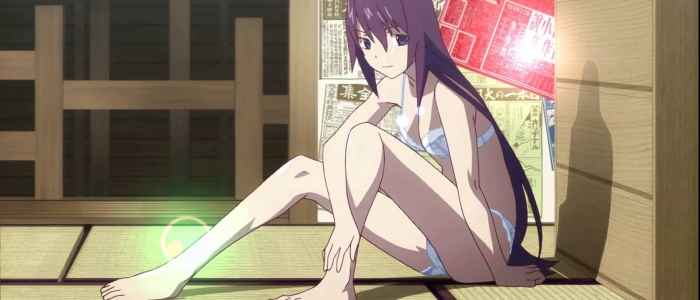
The series does much more with fanservice than just show who’s attracted to who though. For instance, early on in Nisemonogatari, Araragi and the vampire Shinobu seek to reconcile after both holding grudges against each other in the past. The scene takes place in the elaborate Araragi family bathroom with the two characters casually bathing together as the talk for the first time in a long while. In this instance, the characters involved share a fate: the two of them live and die together, and as such they are completely naked to each other. The usual masks and superficial elements of social interactions do not apply to them; they are completely emotionally open and honest with one another, and they acknowledge and allow this to be the case. While neither of them explicitly state this, the show demonstrates this by having them comfortably take a bath together, their easygoing conversation despite their nudity showing that these characters share an abnormal closeness and that they aren’t limited by the same boundaries as they are with the other people in their lives.
This idea is paralleled by Araragi’s relationship with his junior Suruga Kanbaru, a girl who constantly uses her own nudity to make Araragi uncomfortable and disturbed. Araragi’s consistent blunt rejection of Kanbaru’s frankness shows that he is not willing to open up to her in the same way he does with Shinobu. Whereas he doesn’t bat an eye at the notion of sitting naked in a tub with Shinobu, he finds himself reverting to condemnations of indecency when Kanbaru is involved, flatly refusing the openness that she constantly places in front of him. Yes, these characters are naked, but the implications of that are more than just fanservice. Monogatari wants us to see what the characters themselves are unwilling to say: the truths that only their actions show.
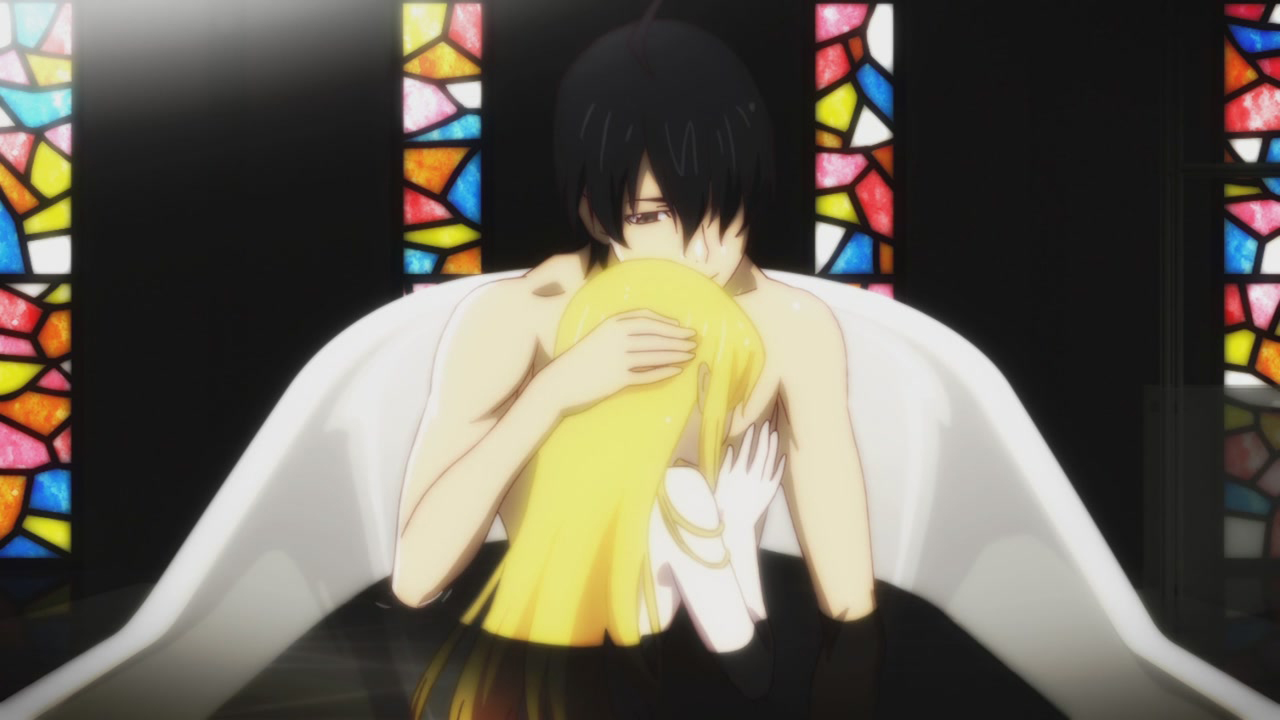
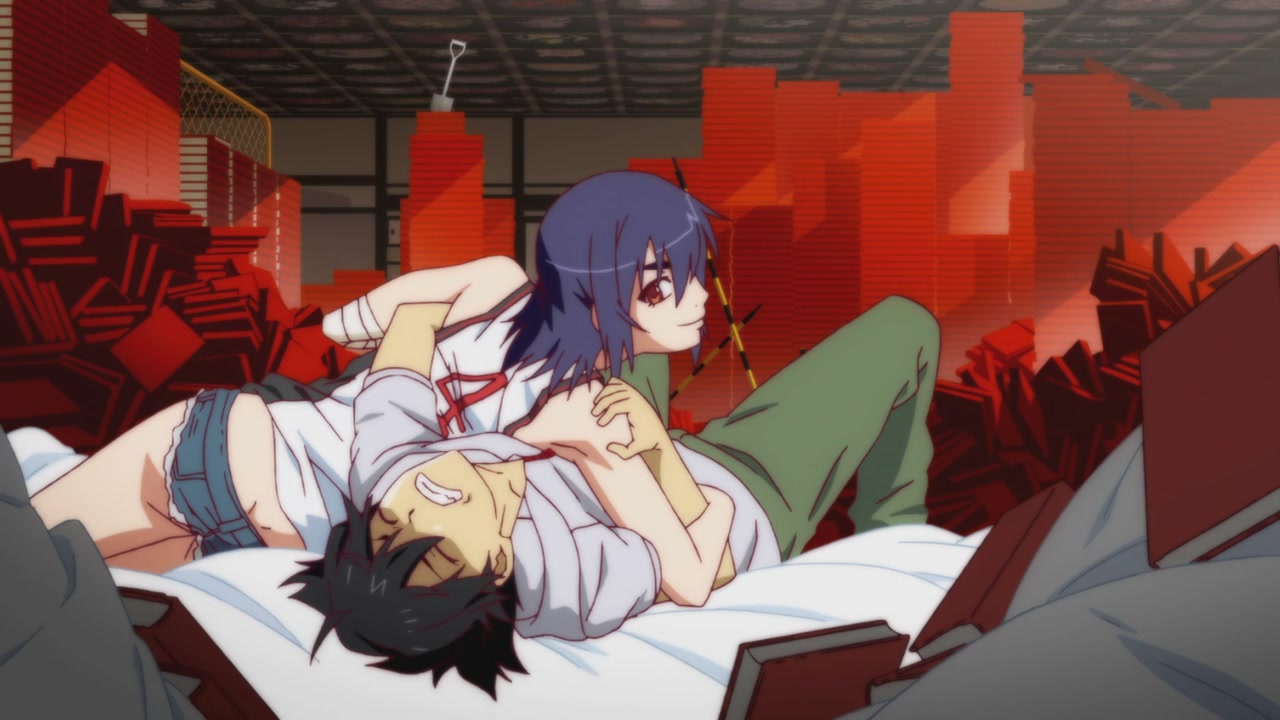
Even now, Monogatari continues to find new and creative ways to use fanservice elements to help tell its story. Whether it be demonstrating the change in the relationship between two characters, amplifying the absurdity of uncomfortable nature of a scene, or simply letting us know that one of the characters is horny, the varied and unique ways in which Monogatari shapes fanservice into something of substance are constantly impressive.
Towards the Future of Fanservice
So is a boob always just a boob? By now it should be clear that the answer is a resounding “no”. There are many shows like the ones mentioned above that manage to take the established formulas of anime and alter them in ways that lend tried and true techniques a new angle of meaning. Viewers have to keep this in mind when watching any anime: while it may be tempting to jump to the conclusion that anything resembling fanservice is just there to appease the audience and ensure that profit is made, this way of thinking can often shut out the possibility of seeing what the show is actually doing. Yes, there are a very high percentage of shows that use fanservice shamelessly, but there are also those that use fanservice elements in clever ways and it would truly be a shame for this to be overlooked. The more recognition shows like Kill La Kill and Monogatari get for the way they handle these elements, the more likely we are to see more shows like them that take time to think and plan how to incorporate them into the greater mission of the story. The possibilities are endless, as they usually are with a medium such as anime, and with the immense number of shows being produced each year and the fact that no one has greater control over what gets made than the consumer, it would be a shame to let those possibilities go to waste.
What do you think? Leave a comment.




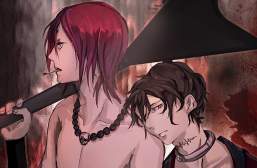




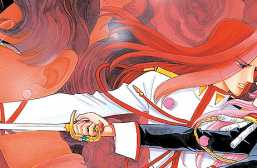

Fanservice is one of the things about anime that makes me not want to watch it. I’ve been able to get past it in Ghost in the Shell because of how amazing the rest of the show is, but it really ruins stuff for me. I’m watching Black Lagoon on someone’s recommendation and the fanservice is bothering me quite a bit in it to the point where I’m not liking the show as much as I could be.
This is coming from someone who very rarely watches anime for various reasons and only likes a couple (Ghost in the Shell, Ergo Proxy, Evangelion).
I can laugh at it and play along to some extent. There are shows that use fan service in ways that actually add to the comedic value.
I don’t think sex scenes in movies, shows or anime adds anything and is just filler.
I watched High School of the Dead with my husband and had no problems with it. In fact, I like it and even am reading the manga. But let’s face it: it’s drawn by a hentai artist. It’s going to be T&A. But it’s going to be consistent T&A.
What bothers me is inconsistency. Take Fairy Tail. I love it, but I can’t tell you how many times I looked at my husband and said, “Where did she get those?” As then the same character in the next shot looks like a normal female again.
I understand fan service serves it’s purpose. Honestly though, my favorite anime usually don’t have a lot of those kinds of shots.
The sad thing is, while normal human beings like us thing fanservice detracts from the story and adds nothing positive, the vast majority of like, HARDCORE anime fans disagree… And there’s a lot of them out there. You know, those people that support the fuck pillow and mousepad-with-tits market; the ones that will willingly shell out $200 for a wall banner of a mostly-naked 8 year old on it. When I think “anime fan”, that’s what comes to mind. It’s one thing to like a bunch of animes – great fiction doesn’t really have hard borders. It’s another to devote yourself to a genre of Japanese animation to the point of bizarre obsession. Weeaboos creep me out, man.
I definitely think that the category of fans you speak of exist, but I don’t think they are a large portion of the fandom itself, I think they may be more willing to shell out cash for products like this however. I have never bought an anime collectable and it’s usually because the collectibles released are almost always the female characters in sexual position, instead of just a badass dude from the show, which I would be more inclined to buy.
Hey, try not to be such an asshat, okay? Don’t generalize people based on stereotypes your probably got from looking at Internet memes. Also, stop talking about weeaboos. Because first of all, that’s not actually the correct term (either say weeb, or wapanese. Or better yet, just shut your dumb mouth). Secondly, if you’re talking about hardcore anime fans you’re ACTUALLY talking about japanese people. NOT weeaboos.
My top anime fan service:
#10 -Tenchi Muyo GXP
#9 – Negima
#8 – Girls Bravo
#7 – High School of the Dead
#6 – Haganai
#5 – Cat Planet Cuties
#4 – Heavens Lost Property
#3 – Rosario + Vampire
#2 – Sekirei
#1 – High School DXD
This list is legit! XD Some stuff I might have moved around, or replaced a few, but thats just my opinion.
Personally, I don’t mind tongue in cheek or humorous fanservice, though it can feel out of place in more serious settings.
Fan service of course does not just include boob and panty shots, the term was built to include anything that will please the audience. In that respect, having a cut-out of Holo in Durarara! could be seen as fan service as it creates something that fans can look at and say, ‘Hey! How cool is that?’
On the more sexual content though. Fan service for no reason is a pain. It doesn’t have to ruin a show, but it certainly doesn’t add to it. My problem with this sort of fan service is when it strays too low on age. With older characters like Revy in Black Lagoon for example, fan service doesn’t feel awkward to me. When you head into teenage territory that’s more likely to put me off (I’m in my 30’s, so that possibly has a bearing on that). When you stray to the lower end of teens and beyond, that’s my cue to switch off. I personally find it equally shocking and disgusting that there’s a market for stuff like that.
Great stuff here, and I think it totally possible to do both!
It all comes down to how things are presented. If you’re watching a serious discussion scene in a show and a character just stumbles through with her breasts spilling out everywhere, yes, it is very likely to just be fanservice. Yet, if we reframe a serious discussion to an awkward conversation, maybe some more explicit sexuality from a ditz of a character could be the comic relief, the way out for someone having an uncomfortable conversation. The boobs might still be there, but the intent, and more importantly the reception, would likely be different.
Those who are skillful at their craft will find the beneficial ways to use everything, even fanservice. Maybe there’s a tease of a long-running potential romance between characters at the end of a season. That could be fanservice that is not just ditching the plot.
All in all, it sounds like fanservice is almost synonymous to sexuality here, particularly objectifying females. While I understand that it is being abused by many as a gimmick to please some fans, there are surely moments when it could instead be put to masterful use and make the plot and drama of a show even stronger. Let’s hope there’s more of that going on in the future!
I agree! However, while fanservice is not technically a sexual thing, I would argue that the term has developed that implication.
Anyone who claims anime is misogynistic is an idiot. Especially since anime has some of the most well developed female characters in existence. Just like movies, there are things geared strictly for a male demographic, things geared for a female demographic, and things geared for both.
Shoujo anime are every bit as filled with fan-service as shonen anime.
While I agree that there are exceptions, I will say that I feel as though a disproportionate amount of anime (especially popular shows) are misogynistic and showcase shallow female characters compared to other mediums.
Not really, even some of the most hardcore ecchi harem anime have decently developed female characters because that’s what it requires to succeed. Yes, there are over used character setups, but just because an archetype is overused does not make it shallow or bad.
If you think the female characters are any less developed than other mediums then you should go watch any slasher action bro-movie out there.
The ones that don’t have well developed female characters don’t have well developed male characters either. That’s why Nyaruko did so much better than Kanokon despite the really similar premise.
yeah I’d rather read the article Intent vs Perception because I think this completely underscores the effects of fanservice by trying to showcase the intent as if intent can change perception. It doesn’t really work like that. It’s like saying “No offense but…” just because it isn’t intended to say objectify women doesn’t mean it is not objectifying women. And while Kill La Kill is, I agree, very clearly crafted to in part mock skimpy fighting outfits. It does it while at the same time engaging in the same behaviour. While they get points for also trying to, at some points, objectify a few of their male characters what I remember is that it didn’t, and can’t really be the same. The focus and majority are one female characters.
If your hero is a black man fighting racism and that black man is just as sexist as his enemy is racist that’s not being better.
Fanservice as titillating tone setting or for laughs is problematic. Fanservice to tell a story. In theory I could possibly get behind that but i really can’t see it as necessary. You can tell stories without fanservice. And considering the perception of fanservice to keep trying to make it work is drawing from a poisoned well. As an artist you can create your vision however you like but for all your intent perception will be colored first by the environment of perception and in 2015 the perception of fanservice is poisoned well first before anything, and that will stop people from seeing any other aspect of the vision.
Good points, however, I will say this isn’t so much a defense of fanservice as a demonstration that it has the potential to be used more creatively and tastefully than it currently is. In my ideal world, there is no fanservice. I would have made that clear, but that’s not really what the article is about: it’s about how considering that we live in a world where fans demand fanservice and anime is an industry that there are still ways that creators can fulfill those demands while not sacrificing substance and morality.
So..
Presuming fanservice, can fanservice be used in interesting ways.
Ok, more interesting. I’ll come back and finish the article later, but still there’s room for highlighting the ways not to use fanservice rather than how to use it.
To be honest it’s never really bugged me. But then again I’ve never seen an anime that’s super heavy on it and most of the one’s I’ve seen that were heavier on it usually backed off on it by the mid point. Soul Eater and Gurren Lagann are the only two I can think of at the moment. Both have quite a bit of fan service in the earlier episodes that quietly dies off as the show goes on (Speaking of Gurren Lagann I literally just finished rewatching it and it’s soooo damn good). I see a couple of Ghost in the Shell:SAC mentions, but I honestly never found the Major to be all that fanservice-y. Sure there were definitely a couple of moments where they focused on her *ahem* assets, but it never really felt pervasive to me… although I still have most of the second season to watch, so there could be a ton more and I just don’t know it…
Wait wait wait…. I thought of a type of fanservice that really does bug me. Over the top giant miniature planet sized breasts… They’re A.) unattractive (IMO), and B.) so giant that they have to cause those poor poor animated girls back problems.
I’ve probably seen a lot more fan service than I think I have though and have just forgotten about the vast majority of it.
I’m fine with titillation; it’s pandering that bothers me.
I know that sounds stupid, but when it’s in my face too much, it exacerbates my issues. I also recognize that’s a personal insecurity and it’s my problem alone.
I’ve come to expect fan service. Honestly, I don’t really mind anymore…usually.
Being totally honest, I love me some close-up and detailed shots of weapons, vehicles and all that. Especially if they’re portrayed realistically~
Agreed. In a way, it’s not too different from the other type, but they’re very rarely done in a way that it interferes with the story, and even adds action and freshness to the scene most of the times.
They are cartoon situation it is silly and it is suppose to be.
Yeaah, NO. Anime, even the most obnoxious overdone harem filler crap, is leagues ahead of American cartoons. Even Disney has to acknowledge the contributions that Japanese animation has contributed to anything animated, especially with Ghibli under their belt. Calling anime “cartoons” is heresy. It deserves its own category and shouldn’t be lumped. It’s anything but the same.
Cartoons are things like Adventure time, justice league,johnny bravo, flinstones, jetsons, simpsons, family guy, etc
Cartoons and animes being the same is like saying Water and Vodka are the same cause they are both clear color…..
While I agree with some of the statements made I have to respectfully disagree…to an extent. Skin has a way of making itself known. While I think it is possible to utilize fan service properly I also think it is better left not done if necessary. Also while I will not deny that NGE was atmospheric I doubt that the claims about its use of fan service were intentional. NGE’s main themes were its psychological and religious allusions. The “fan service” was part of Shinji’s coming of age. Not necessarily as part of a commentary. Kill la Kill makes for better commentary because the screwball plot revolves around the use of clothing and nudity.
Fanservice can kill interest in Anime for me, and actually made me stop watching it altogether for a while. After trying to give Anime another shot, more fanservice came back and it actually ended up being the deciding factor for me to stop watching Sword Art: Online (the whole tentacles thing).
Usually I can ignore it if it’s not bad enough, but for that particular anime, I was already tempted to stop watching it for various reasons, and that was just the one that pushed me over to the “disinterested” side. I think when it starts getting unrealistic or makes me feel embarrassed for watching the show is when it really starts to bother me.
There are times that fanservice is so bad it can make me not want to watch a series at all if I know that there’s a decent amount in it. High School of the Dead is the perfect example of this.
I really think that fanservice should be included occasionally, both on the ladies and the gents, but I think standard outfits that are nothing but fanservice are pretty bad. When every episode features lingering shots on various nude curves, there’s a problem.
Fanservice in high school of the dead bothered me to no end.. good story and action runined by random panty shots and breast physics. .
Seriously when my roommate would come down I would exit netflix fast like it was a damn porno..
Nice overview of this topic. Everyone likes boobs and butts sometimes.
I love how you handheld this topic.
I really liked how you did this article. And I think we also have to understand that real life has “fan service” when girls and guys wear/do things in real life to attract the opposite sex. So as long as it’s used carefully in an anime, small amounts of it could be seen as a depiction of real life “fan service” or at the very least we can relate to it because we’d want it to happen or wish we had the guts to act on these elements. I agree over the top amounts can be ridic, but a little here and there giving people what they want can help them connect and relate to the story.
How has it come to the point that the term “fanservice” has been reduced to the presentation of naked skin of mostly female anime characters in a sexual context? I would classify this article as a mere enumeration of puritan insights if it was not for the last paragraph where some degree relativization occurs and actual analysis happens.
Interestingly, violence is not worth any headline at all because it has become so commonplace that our perception is not triggered anymore. Why are gunshots, stabbing or punching not regarded as fanservice as well? No questions whether violence, especially if excessivelly depicted, is essential for the narration?
I bet that some of the many shooting rampages never would have happened if there was more of a natural and relaxed perception of boobs and underskirt tracking shots in the bigotry-soaked US.
As I said in response to a comment a little further up, while fanservice definitely does not inherently have a sexual or gendered connotation, when referring to anime that is the meaning that the term has developed. Talk to most anime viewers about shows with “fanservice” in them and they’ll react in the same way.
At no point in this article do I condone the use of excessive violence in media. I think that you’re right: that is another form of pandering, and is potentially far more damaging. Someone could probably write a pretty great article about that. This article, however, is neither about the negative affects of media violence nor the evils of misogyny in media, it’s about the constructive ways that skin and sexual elements can be used to supplement or enhance a story. You seem to be under the impression that this article is about how fanservice is evil when in fact it’s just demanding a more tasteful, creative and competent version of it.
When you think about it, Pacific Rim was basically a full-length fanservice feature film, and I totally loved it ^^ I guess one of the big differences is that this type of fanservice is a bit less intrusive sometimes. And it can also be justified by the plot .
My issue with fanservice just comes down to it getting old.
It adds nothing to any story, it’s usually the same kind of shots, the same kind of lame jokes, and porn is free. If someone wants to tell a serious story, just do it, but if they want to tell a serious story with fanservice…don’t expect people to take it seriously.
The fact that it detracts from the story is my biggest problem with it, it feels like padding or something that a production studio has forced on creators in order to add “appeal” to the show because sex sells or whatever and it often comes across that way, forced and old.
I like fan service if its funny if not then its dumb.
Theres some exceptions, like in Gunbuster where the main character tries really hard to do something so she rips her shirt off, leaving her breasts visible. The camera is never focused at them, but they are visible, so i guess its fanservice? Either way, it helped to see what the MC whas going through, and it wasnt dumb(at least, in my opinion)
Sadly, lots of people make anime with the idea of appealing to the largest number of people possible – the bums on seats rule means you DO give them what you think they want. Art, integrity, originality and making the best possible show have little to with what a lot of producers make…
I find a lot fan service oddly out of place in some shows, one that struck me recently was in K (project k, or whatever the proper name for it is), I found thematically the show seemed aimed at an audience that enjoys shounen-ai/BL content, but the show is still peppered full of T&A close up of the female characters. To me I feel that the fan service in this show was not only unnecessary but completely misplaced for the show’s audience.
Their is so much focus on the sugestive themes portions of Fan-service, that people actually forget what it originally meant.
Highschool DxD is one of the best shows that has excessive fanservice and I love it.
Anime with plot is where the focus should be.
Hello,
I thought your essay both well written and intriguing. I myself deal with the same problem of fanservice in many series. Your discussion on these points concerning the use and problem of fanservice in anime brought a different perspective to mind that I had not given to it before…on the fact that I believe there to be no other reason than fan appeasement. However your writing on the aforementioned anime series (I never watched them) offers a different consideration on the purpose, intent, and use of fanservice which is quite thought-provoking.
mengleking.
Good work at analyzing the potential deconstruction techniques in anime. I watched the Corpse Party game and four-episode anime, and while the game has an amazing narrative, I was a bit put off by the teenage female characters having frames angled in such a way that the focus was in their underwear.
*On their underwear, I meant.
If people really like these things I have a recommendation. Prison School… So many panty shots
Nice use of examples of NGE and Kill la Kill for more creative uses of fan service.
I have a love/hate relationship with fanservice. It’s difficult for me to pin down fanservice to cater to the ‘male gaze’ when I, a pansexual nonbinary individual, happen to casually enjoy hentai. Fanservice, to me, has no place in stories focusing heavily on plot and character development. But fanservice itself has humorous elements, which the likes of Studio Trigger used to its advantage in Kill La Kill.
As a blogger on tumblr who follows many anime blogs, I find that fanservice transforms many female characters into icons, be it Ryuko or Asuka. But if you were to ask the fans of these icons why they like these characters, I would wager they would refer to their personalities faster than their T&A. This is an interesting aspect of fanservice that I think deserves more speculation.
Otherwise, this is excellently written, very thought provoking!
To be honest, I watch a lot of fanservice series, but that doesn’t mean I watch it for the fanservice. There are plenty of series out there that have an amazing story and some awesome characters that I love. Like in Highschool DxD, my favorite character is not Rias or Akeno or even Issei, but most likely Kiba because he is just such a cool character and I love his design!
This is the thing that makes it hard for me to show my non-anime oriented friends some of my favorite series. A lot of the time if someone who is not familiar with Anime tropes is looking at some of the stuff I watch, they would probably think I was some sort of deviant with all the sparsely dressed women on screen, but hidden beneath the fan service there can be really good stuff! Gurren Lagann first comes to mind. Nothing too deep or philosophical, just something fun to watch with a good story.
Trust me, I totally understand where you are coming from. And the sad thing is that even when you do get people into some of these series, some of them, like you watch it for the storyline, but then you have those other fans that watch it for the fanservice which doesn’t really help in your cause.
I have been critized for watching some series before even though I could outline in-depth various storyline details that intrigued me. The problem is that no matter what you say or any way you try to explain yourself, people always group those that watch a series for the sake of of the storyline as people that watch for fanservice which truly is sad…
Noting that SAO and Fairy tail have been ‘wildly successful’ because of their fanservice is sort of doing a disservice to the topic. Both were originally in other mediums to anime, and while a lot can be said for manga often defaulting to a level of fanservice from the start so that the series gets popularity and doesn’t get cancelled (it’s worth, with that in mind, noting how some shows adapted from their manga begin more fanservice-y and then lose that quality), SAO seems to have a following more because of its relatability to a global market (video games, portrayed in a style that doesn’t feel exclusively Japanese) and because the ‘hardcore’ side of the fanbase are ahead of the anime by reading the novels, looking forward to the later arcs that what has been shown so far, since the writer has apparently improved their storytelling over time. One should not overstate or oversimplify the effect of fanservice as this article seems to have done.
I also think it’s vital to note that Ryuko’s embarrassment with her skimpy outfit goes away /completely/ early on in the show. Later on she’s ditching the clothes altogether and going around in a bedsheet. It’s stressed that she has no need to be embarrassed, as people looking at her lustfully are in the wrong themselves; she should be able to wear what she likes. While wrapped in comedy, this is a very sincere and sobering challenge to the fanservice-enjoying viewer – even if the camera seems to be encouraging you to get your cliché nosebleed, isn’t the ultimate responsibility for the sexualisation of women in media always resting with you?
I think you have differentiated successfully between haute anime and faible anime.
Interesting! I’ve been thinking about possible fanservice in Death Note, by sexualizing female characters. In some cases, I consider it pure fanservice without any relevance, e.g. Naomi Misora’s boobs emphasising pics (but I think that was only in the manga) and sometimes with Misa’s revealing outfits. However, some scenes might have more purpose than only pleasing people who like to see naked women. Misa often dresses sexily, sometimes trying to seduce Light. Two things become clear: Light and Misa most probably have sex and/but Light doesn’t feel attracted to her while most male characters definitely do. Another possible fanservice is SPK member Halle Lidner showering in front of Mello (doesn’t occur in the anime). This scene is read by fans in two ways: Halle and Mello had sex and that’s the reason she’s at ease to show herself naked or Mello has no sexual interest in women (he appears to be indifferent) and Halle has a rather unconventional mindset. Of course, there are more forms of fanservice; this is only me reflecting on the possible sexism in DN.
This is very interesting! One of the qualms my family had when they were introduced to my fascination with anime was they rather mature or adult styles. This also combats anything said about anime being “pornographic.” While the fanservice personally makes me slightly uncomfortable, these are very insightful ideas that explain it through a new, practical lens.
70% Rubbish
I was only introduced to anime like two years ago or so. I’d had friends telling me to watch this or that anime for years, but I never really got around to it. I, like the average American citizen, had a lot of preconceived notions and stereotypes about anime. In particular, fan service was a big problem for me, which I thought to be representative of what I perceived as the immature and escapist nature of the genre.
Obviously, I’ve since gotten beyond such things, as I now have over a dozen anime series under my belt. But fan service has still been awkward at best. Oftentimes, it’s simply uncomfortable, even when included simply for laughs. I’m a student at the University of St. Thomas myself, and I’m not sure I need to explain how uncomfortable it gets when we’re watching “No Game No Life” on the big projector in the Anime Club’s room with thirty people present and a rather explicit picture of a female character or two comes up. Honestly, I’m not sure if it’s more or less awkward when it comes up in shows I’m watching alone. My fear then is that someone will stumble upon me at this moment and think I’m watching some sort of hentai.
I don’t believe fan service is really ever truly necessary. Any show that uses it for artistic intent could probably use something else to suggest the same thing. This isn’t to say that they necessarily should, but the fact is there that fan service isn’t a must for the genre or any show that’s a part of it.
I like the example listed of “Monogatari”. I must admit my lack of familiarity with the show, but it sounds like the author/artist made a series of intelligent decisions in regards to his inclusion of “fan service”. It’s in instances like “Monogatari” that I don’t necessarily mind fan service. Honestly, it’s the same thing with any sort of sex scene included in any mainstream movie or Netflix series.
If it serves a purpose for the show itself, then I don’t necessarily have a problem with fan service. It’s still usually weird and it is still oftentimes unnecessary, but as long as it isn’t included with pornographic intent, then it’s ok, I think.
Definitely one of the most interesting articles on anime I’ve read in a while, and I’m happy to see someone tackle this issue as it is something that does bother me quite a bit when it comes to anime. I didn’t know that kill la kill was meant to be a parody–but granted, I didn’t know anything about it except that I’d heard it had a ridiculous amount of fanservice. It’s definitely a bit of a relief to know creators of shows are using familiar tropes to create new meaning–and while I still wish fanservice wasn’t the way to go about that, I do appreciate the intent when it comes to making artistic choices.
With the original twenty six episode series of Neon Genesis Evangelism, the fanservice may (mostly)* have a purpose other than titillation, but you definitely can’t say that for the Rebuild movies.
*While there are some scenes where it has a purpose, there are plenty where there is no excuse for it.
I will have to admit that I was watching aníme over Fifty years ago. There were very few choices to even view. We had Astro Boy, Kimba the White Lion, Wonder 3, and Speed Racer. I was unable to watch anything else until much later. Was there fanservice then? Yes but it was much more subdued. But times have changed. We must always remember that aníme is not written for the American Market. It is written for the Japanese Market. Away you take Chobits was there fanservice? There sure was. I dare anyone to call the manga artistic group Clamp a bunch of dirty old men because they are all women. When on his way to his apartment Hideki Monosuwa, a student who failed to get into college, at first glance the body of a girl wem has been disposed of in a garbage collection area wrapped in nothing but long strips of cloth. He looks closer to find out that this is a very cute looking type personal computer called a persocom. Hideki trys his best to to find the power switch to see if this persocom will start up. He finds the power switch at the very last place he trys. With very great embarrassment he turns on the perosocom as the switch is located inside her vigana. Hideki gets even more embarrassed the persocom stands up as the cloth wraps fall off. The story continues on with the naming of the persocom, Chi and how Hideki deals with his feelings about persocom and those who are around him.
The problem with Fan Service is that it usually exploits a character’s sexuality for audience appeal which weakens their depth and complexity. Don’t get me wrong, sexuality has it’s place in all media but when the action is out of character it disrupts the dynamic of the story and relationship of the viewer and the character in questions. A good example of this is the whole controversy that happened recently with Blizzard’s “Overwatch” game and the character Tracer.
Ever wonder what anime would be like if there was absolutely no fan service? Many anime rely on it to lighten the mood so what happens if it disappears?
This was very well written.
Muito bom o texto, parabéns!
I suppose that it is entirely possible that those who find themselves outraged by excessive amounts of fan-service, might find that it is the lack of realism that outrages them the most.
Fan service is an interesting topic for debate when it comes to anime, as it can be used to draw in fans, but it can also alienate other fans. Much like in western film, fan service is everywhere and is fully capable of bringing in fans. However the extent that some anime go to, is sometimes a bit too much and creates an illusion that fans of anime are perverts.
I’m currently watching Sin: Nanatsu no Taizai and I keep finding myself skipping through the episodes. Anime’s like this that are completely driven by fan service are an issue and ruin what could be a great action fantasy anime.
Stop acting like 10 year old child. Heck I’m 17 and i watch fan service I’ve been watching anime for long that I got used to it.
Fan service is everywhere in every media not just anime. Stop acting like a child and face it